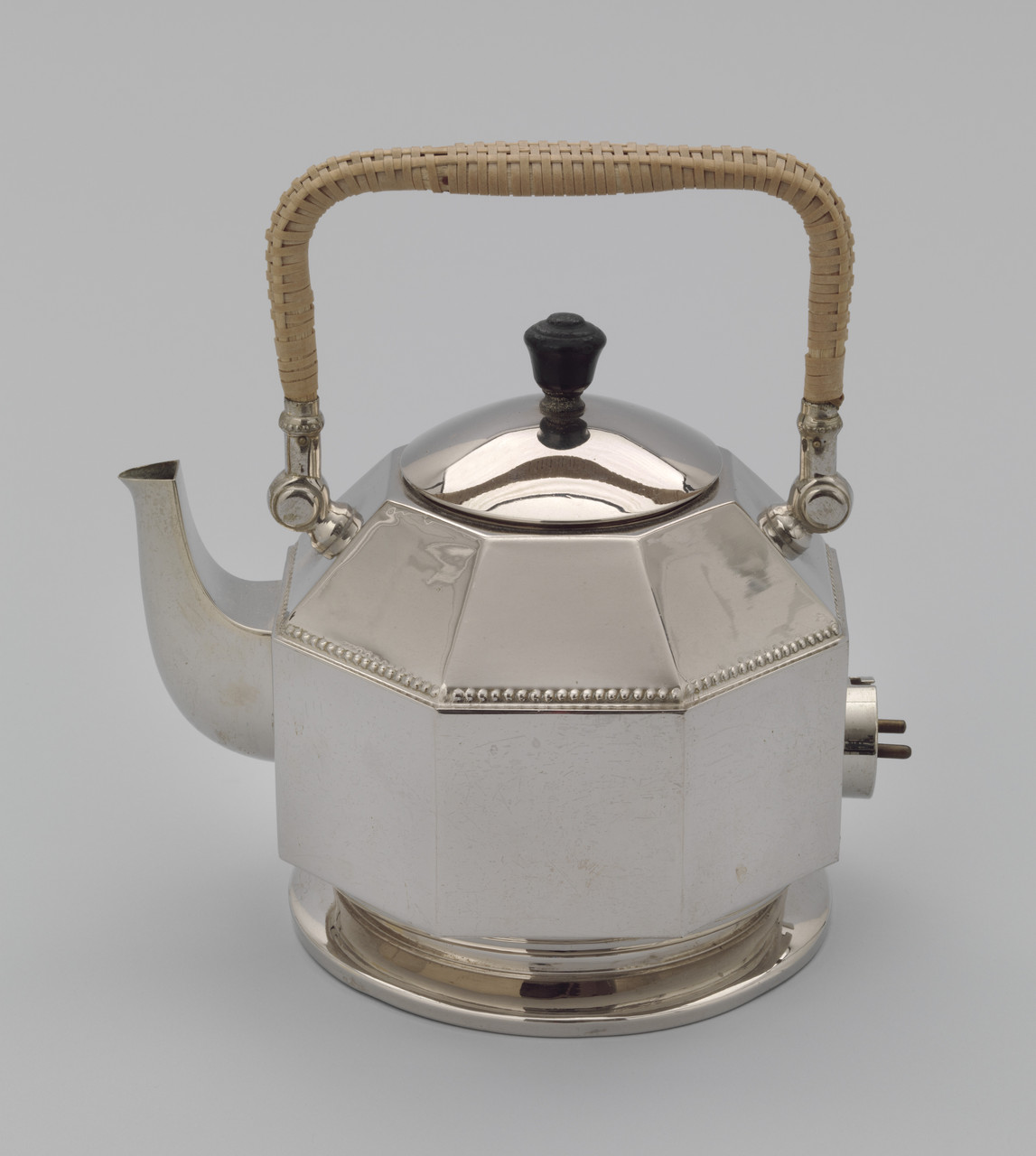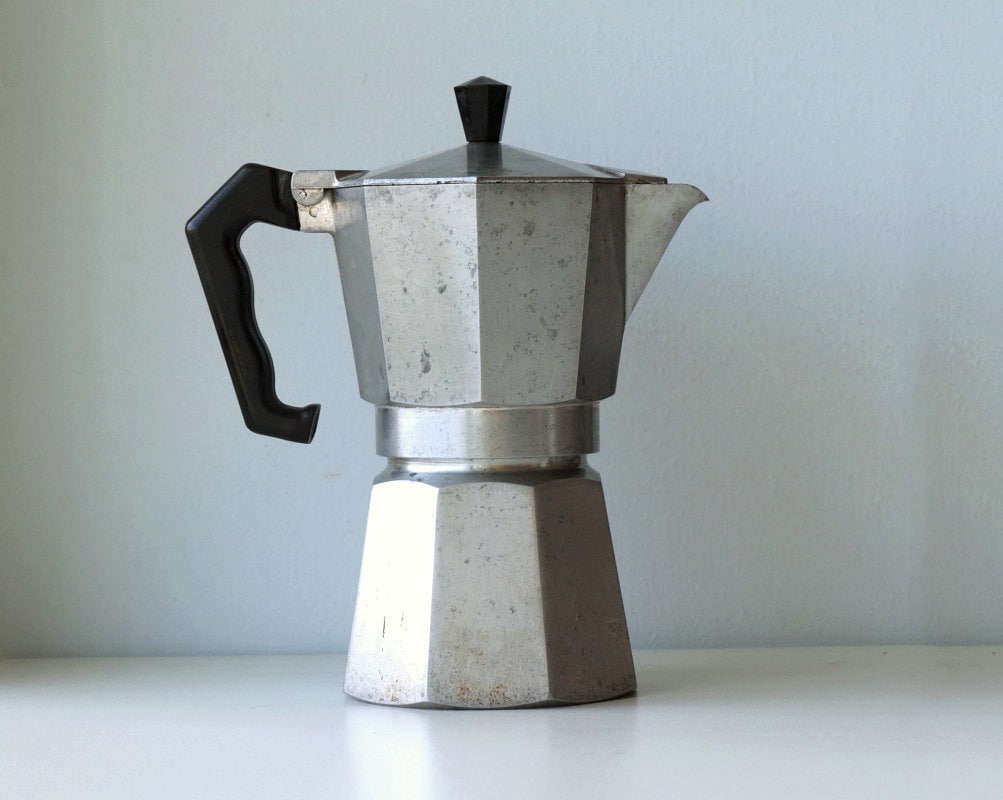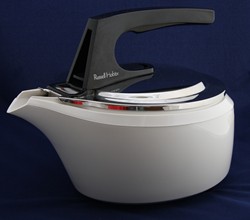The Traditional Form
When we ask what good design is in the context of any specific product, it is important to first investigate what the iconic, average, common form is of said object. This can be roughly found with a quick google search.
Most of these, especially the ones that are actually traditional kettles, are that of the stove-top variety, a style not of much relevance to the UK. The form is very similar to that of traditional tea-pots, which is no surprise, as they are used in the same way and I suppose their designs would have evolved over time together.
One interesting stove-top kettle to begin on in our investigation would be the Sori Yagani Kettle, designed by Sori Yagani. First made in the 1960's, this product is a careful and sensitive summary of traditional kettle designs that came before it.
Hand crafted in japan, since the 60's, despite not being an actual historical example, the design points us towards many traditional features of the traditional stove kettle: The swinging handle allows it to be stored away (not a regular feature of electric kettles). The wide opening means it is easy to clean and fill. The carefully curved spout, always a feature of traditional kettles but rarely on modern ones, gives the user a more predictable flow which is useful for carefully filling tiny Japanese teacups, less essential for making large mugs of instant coffee.
The wide form is also a functional derivative, on less efficient flame stoves, or similar, a wide, short form reduces necessary internal convection and puts most of the water closest to the heat. Powerful modern 3kW rapid boil kettles need this less as bubbles and internal turbulence begin almost immediately.
A modernist history of kettle design
As product designers, we tend to assume that history begins in the year 1859. This is largely true, as this was the year of the Thonet bentwood chair; and therefore of mass-production, and incidentally, forms that arise not from careful, gentle crafty emotions, but are derived from the needs and economics of mechanical production.
An interesting proto-modernist form we will turn our attention to is an 1880's teapot designed by none other than Glasgow's own Christopher Dresser.
Here dresser has anticipated the rational forms that would come to define the bauhaus and early modernism, and ripped up the rulebook of the often whimsical victorian industry by delivering a teapot with robust corners and flat, polished surfaces. Alas, he has also ignored the very practical user and manufacturing requirements that were the very backbone of the regular ceramic teapot design. Despite the machine-age aesthetic, this design was before its time and was not mass-produced, a middle class curiosity that was in fact admired for the quirkiness it was designed to reject.
It takes us another 29 years before we find a kettle that is genuine modernism in every way:
Peter Behrens is of course famous for his fully integrated control of AEG's visual matter in the early 20th century. This kettle is of especially high importance because it was also the first successful electric kettle. In overall form, it accepts generally what has come before, but by giving it dresser-like flat polished forms, a sharp octagonal shape, and in replacing traditional ornament with a weld-like repetitive beading, this is a design that represents successful introduction of a new technology by combining the old with the noticeably new.
Another wildly different but similarly inspiring product from around the same time is the Kelly Kettle.
The Kelly Kettle/Volcano Kettle and similar items such as the New Zealand Thermette arrived at the turn of the century as efficient, lightweight outdoor kettles. They have been used ever since by anglers, hikers and soldiers. What these are are examples of actual functionalism and utility, in contrast to the middle-class academic efforts by people such as Dresser. In their absolute, unpretentious and accidental functionalism, they have proven to be absolutely timeless; proof that design on the knife-edge of survival can never be corrupted by the whims of style and fashion.
A coffee maker and not a kettle, but one can't write a post about all things vaguely kettle shaped without mentioning the Bialetti Moka Express.
Another modernist icon to reduce the cylinder to sharp octagonal faces, this confident, forward-looking coffee maker became a best-seller and is still produced to this day. It also was low-priced and designed for manufacture - a sign of real modernism - it's cast aluminium construction was a cheap and innovative reconstruction of expensive silver coffee pots. It's still cheap today, the authentic version still hovers at around £30, cheaper versions can be found for £15, which is a testament to how the fusion of a good idea with the right amount of style and appropriate manufacture can create a lasting, timeless, emancipating product.
Jump to the end of the war, and we are at the beginning of another revolution.
Earl Tupper's Tupperware, which combined the revolutionary flexible plastic Polyethylene with flexible sealing joints and hinges was a successful early attempt to produce cheap household commodities in large numbers. Plastic isn't quite ready for full inclusion in wet electronic appliances yet, but this early milk pitcher pre-empts all there is to consider when producing plastic moulded kettles. The soft, vague, sloping forms which make it easy to mould, and the free and liberal application of colour signify what is possible in the transition from metal to plastic.
It will take us a long while however for plastic to be considered appropriate to be the entire basis of a kettle however, and in the meantime, 1952 delivers a cool, Scandinavian, mid-century interpretation of the traditional teapot:
Soft, cool, relaxed, this represents everything about the again-popular 'mid-century' period, and takes us away from the brash turn-of-the-century forms, balancing simplicity and utility with flair and market-sensitivity.
Back to the electric-kettle market, and 1960 has some important technical innovations for us.
In 1955, the Russel Hobbs K1 was the first to introduce automatic steam switch-off, but the K2 arrived in 1960 as a more convincing aesthetic whole, and remained the best selling electric kettle in the UK for the next 20 years. Visually, it is a careful combination of traditionalism and restraint, perfect for mass-market appeal. One can also observe that the black controller on the rear-side of the device that is of a very similar general makeup to the R7 control found on kettles today.
Less traditional is the spartan Braun HE1/12 from 1961:
Accepting the language of chrome metal and black plastic, but with a typical Dieter Rams combination of rigid, rigid functionalism and simplicity. A true 'black box' design, doing nothing more and nothing less than necessary, design of the Braun era like this was to be the foundation of more than half a century of reference and cliche. It aims to exactly and exclusively meet the requirements, whilst making a statement against showy advertising-design. The peak of 'maturity' in product design.
Maturity and rationalism quickly became boring over the next two decades however, and academic good design was to retain functionalism on the surface, but collapse into extremism and self-reference.
Alessi's first 'designer' kettle, this marks a serious shift in the focus and attitude of academic good design. Firstly, the design is, in a way, backwards, taking on old forms and even celebrating their circumstantial features. It is also described by Alessi with the phrase 'exquisitely poetic philosophy', a serious change from earlier modernists who at least pretended to be dealing with positive production and emancipation.
Whilst Alessi, as famous Italian brands have tended to do, has decided to solve the problem of market-acceptance by floating off to a higher philosophical dimension (and hence a higher price), on the ground, mainstream brands are ignoring the academic canon of 'good design' altogether, and spurred on by the plastics revolution, are fighting the hard line flogging new forms and functions to the masses.
The first plastic kettle, the Futura gives us a vision of the future, pre-empting Zaha Hadid and using new technologies to achieve new levels of showiness. This was the beginnings not of academic postmodernism, but of marketing and obsolescence driven futurism that still comes and goes, trying to inspire consumers today. They weren't convinced this time though, plastic discoloration and other functional problems, when compared to the still-popular and reliable K2, meant that the Futura was discontinued in 1979. Russell Hobbs themselves even disowned the idea in favour of the older K2:
The Alessi agenda came to it's full fruition in the mid 80's at the height of the postmodern revolution, with the introduction of the 9093 stove kettle by postmodern architect Michael Graves:
A more seminal work of postmodern industrial design is impossible to find, the 'Michael Graves Kettle' has come to iconify Alessi, Postmodernism, and Industrial design itself. Designed to look 'American', it does much more than that, and instead of using the naive but forward-thinking imagery that we have seen over the last 90 years, it references the past, looking to bring forward nostalgic memories, a simulacrum of an America that never existed, but coming with it's bright colours and witty, entertaining, noisy whole, one we wish did. It has since been a best seller, including it's less sincere but more practical electrical brother, the MG32.
Back in the real world, the plastic revolution really came to the fore in the 1980's with the introduction of the familiar 'jug' kettle.
Easy online information on these products is thin on the ground, as they are barely elevated to the level of 'classics' yet. I'd be better asking my parents if they could remember any of the 80's, but from the above Morphy Richards and the following Haden Autojug;
We can see that the kettle has clearly taken most of it's current form, including the exact 1.7 litre capacity, use of white Polypropolene and vertical stance. Looking further at the very controls of the Haden Autojug, and considering that Strix introduced the universal P7 series of controllers in 1985;
We can see that the standard kettle design we currently know and love has been wholly delivered by the mid 80's. Notice how these designs have scrapped the futurism of the late 70's, and the bleeding-edge trend of postmodernism, despite that academically we are told that modernism died at this exact time. This, perhaps, teaches us that when introducing new forms and technologies, as Peter Behrens did in 1909, that functional, non-confusing, 'black box' design is, and always will be, the best way to present.
Which takes us to where we are now, summed up by the Russell Hobs Montana introduced at the turn of the millennium. Claimed as a bestseller by RH themselves, and i've seen one in my Grandma's house, we are now at the millenial stage where we are rejecting and accepting both the slick, uncompromising world of chrome-and-black modernism, and the whimsical, traditional approach of the postmodernists. In terms of functional developments, the average kettle has grown a separate 360 degree base, a clear benefit to the user, and one driven by the controller manufacturers Strix and Otter themselves, the real heroes of today's kettle design.
This study has taken us, via the design of the unassuming common electric kettle, through a full tour of the whims and the waves of the last century-and-a-half of product design itself. It is 17 years since the Montana, and despite existing 'executive' designs that helpfully offer to complicate our morning brew, we are left with not much of relevance that we can anticipate trickling down to the basic market. Current design is identified more by it's variety than anything else, enabled not by a new physical technological revolution; but by Personalisation, Globalisation of trade, and Interconnectivity; a new army of Chinese-built, functionally identical kettles in whatever style we believe best furnishes our kitchen, at whatever price we are willing to pay.


















No comments:
Post a Comment